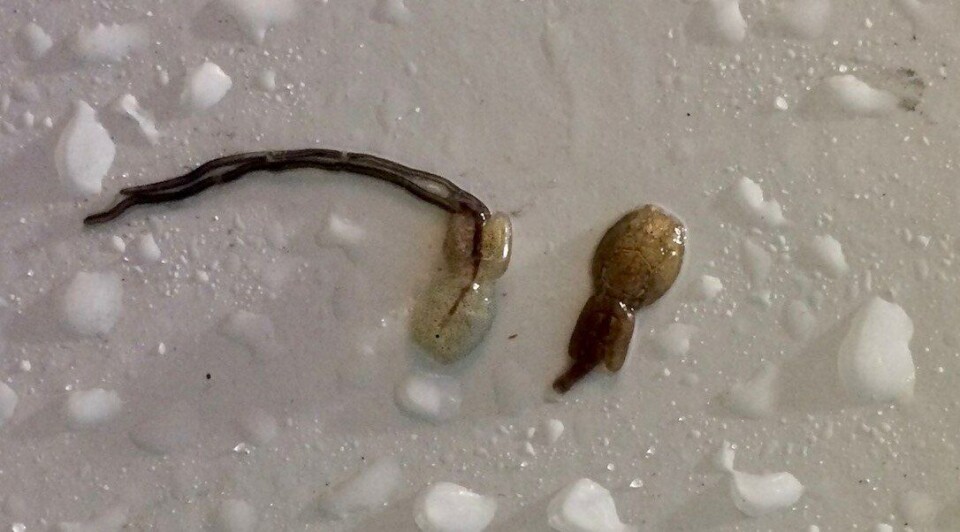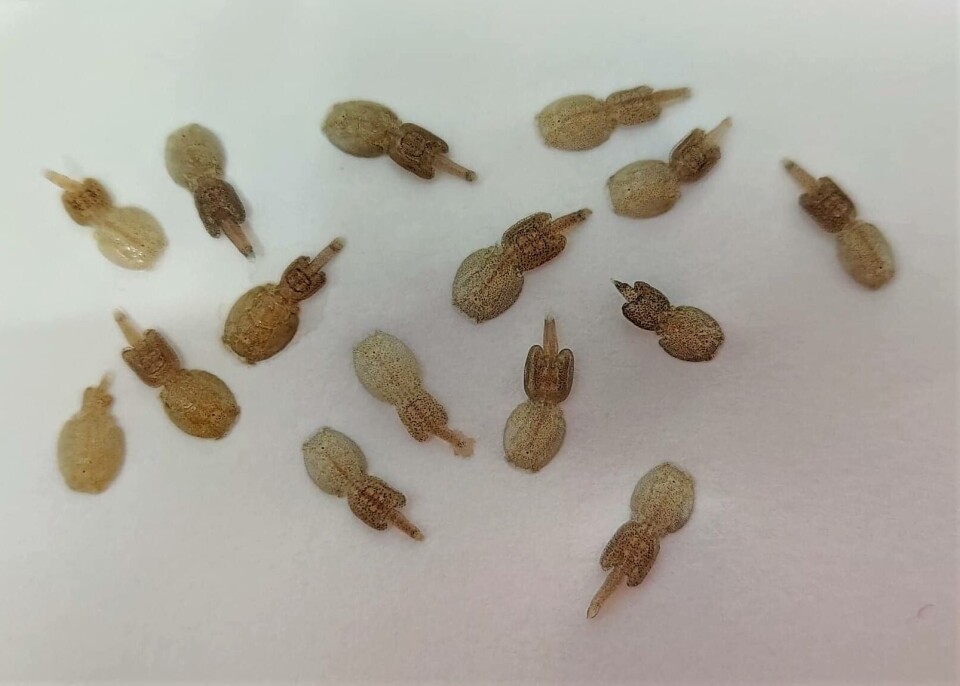
Salmon farmers get the all-clear over translucent lice
Fears that lighter coloured and translucent sea lice may be harder to count and less vulnerable to cleaner fish have proved unfounded, according to fish health companies in Norway.
In 2018, Fish Farming Expert’s Norwegian sister site, Kyst.no, published an article in which Mette Kristin Moen, a senior advisor at the Norwegian Food Safety Authority, expressed concern about the development of shiny and transparent lice which cleaner fish were failing to catch.
She said she was particularly concerned about the rapid development that had taken place.
“There are a large number of shiny and transparent lice in all stages, which are thus not eaten by the cleaner fish,” Moen said.
Varying shades
Kyst.no talked to several fish health companies to hear what their experiences are with shiny salmon lice now.
Kristin Ottesen of HaVet said that their experience is that the lice come in several natural shades, and that these shades can vary with the “substrate”, the colour of the fish and where it sits, whether there have been recent delousing and whether it is short time since a louse has changed its carapace.

“We have no evidence to say that we see a tendency for the lack of effect of cleaner fish on the basis of lighter colour on the lice,” said Ottesen.
“We are not worried that lighter lice will cause significant counting errors under the method by which lice counts are carried out today. The lice in the picture (see right) are all vital lice and in our lice counting courses we are very careful that all lice, regardless of colour and shape, are counted.”
Far from a problem
Kristoffer Berglund Andreassen, head of fish health Northern Norway in STIM, told Kyst.no that it is clear that there is variation in pigmentation in different lice, but he finds it difficult to conclude that this is a growing problem.
“You find lice that are completely shiny here in northern Norway, but we also saw differences in pigmentation both five and ten years ago. Perhaps the trend is for more bright and transparent lice, but this is far from a problem for our customers.”
When it comes to lice counting and spotting shiny salmon lice, Andreassen points out that this is something that the operators at sea do every week throughout the year.
Gradual change
“A possible change in pigmentation in lice will occur gradually over a long period of time, which means that those who count lice will also experience such a gradual change,” he said.
“They will be used to the lice being light and difficult to see, whether they think about it or not. With a possible introduction of new technology for lice counting, where all lice are supposed to be able to be detected, regardless of colour, perhaps this whole problem will belong to the past,” he said.

Good light conditions
Barbo Rimeslaatten Klakegg, head of fish health in Åkerblå, said its staff do not have the impression that there is a significant change towards lighter salmon lice.
Klakegg says it cannot be ruled out that some lice are overlooked when counting.
“In general it is important to have good light conditions, but we do not have the impression that ignoring light lice is a significant issue. Dark lice that sit on dark areas / backs of salmon may be similarly as easy to overlook as light, but we do not have the impression that neither light nor dark lice are a major challenge.”
Insect world
Brit Tørud, head of fish health at the Veterinary Institute (VI), told Kyst.no that no one at VI is working with the problem of shiny lice.
“Our work and our research is currently taking place on the epidemiological side. However, it is not unlikely that there will be a selection so that we get more shiny lice with intense use of cleaner fish. Such colour changes are known from the insect world,” she concluded.






















































